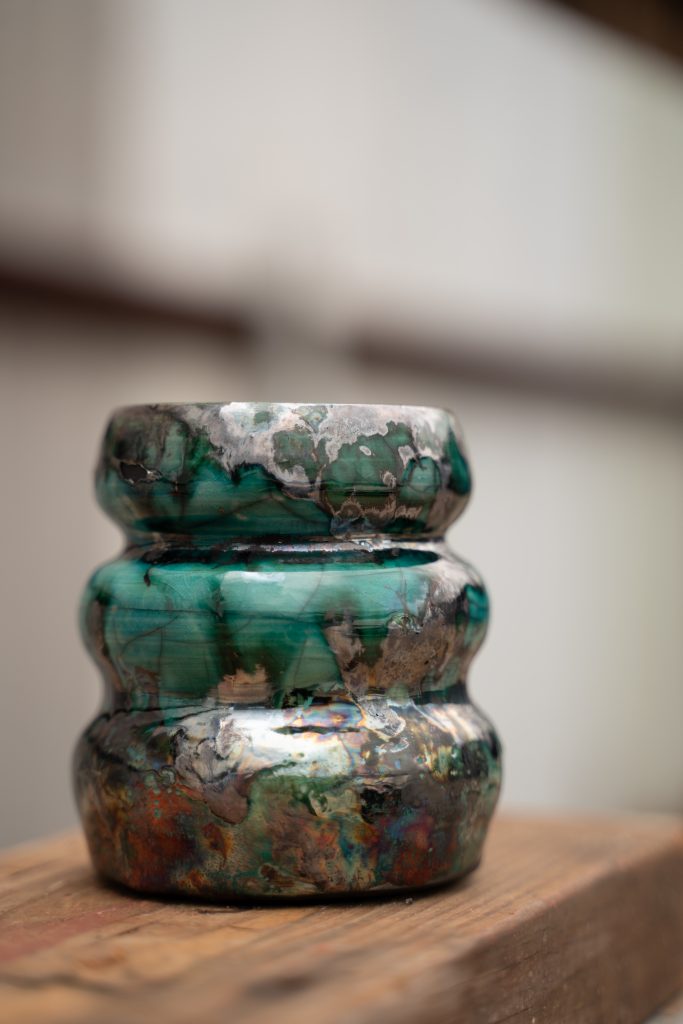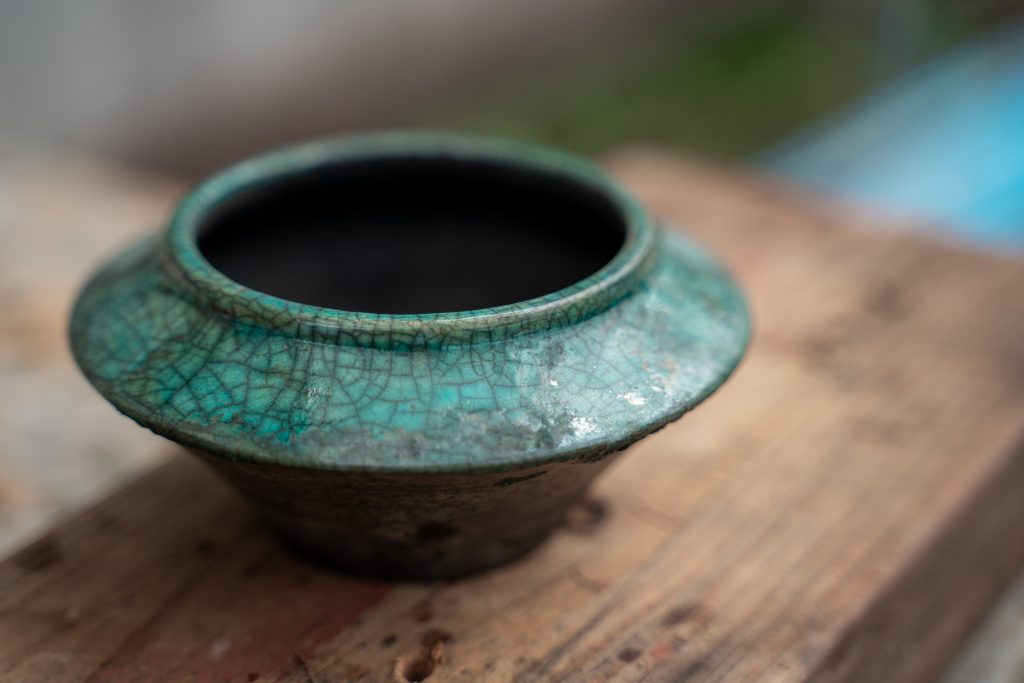Raku firing, a technique developed in 16th-century Japan, is renowned for its dramatic and unpredictable results. The process involves removing pottery from the kiln while at bright red heat and placing it into materials that ignite, creating intense reductions that lead to stunning, often iridescent finishes. Each piece emerges as a unique work of art, marked by the thrilling unpredictability of the raku process

The Historical Roots of Raku
The Raku technique has its origins in Japan, developed during the Momoyama period (1568-1600). It was initially associated with the Japanese tea ceremony, emphasizing simplicity and naturalness. The term “Raku” translates to “enjoyment,” “comfort,” or “ease” and is derived from the personal seal of Chōjirō, the first Raku potter, who was commissioned by Sen no Rikyū, a historical figure in the Japanese tea ceremony. Over centuries, Raku has evolved but retains its essence of embracing the beauty found in natural imperfections.
Understanding the Raku Firing Process
The Raku firing process is what truly sets this technique apart. Unlike traditional pottery firing that allows pieces to slowly cool inside the kiln, pieces are removed while hot. Here’s a closer look at the firing process:
- Heating: Pottery is first bisque-fired and then glazed. The Raku kiln rapidly heats the glazed pieces to high temperatures (typically around 1832°F or 1000°C).
- Removing: The red-hot pieces are carefully removed from the kiln using tongs.
- Reducing: Immediately after removal, the pieces are placed into containers filled with combustible materials (like sawdust or paper). The containers are then sealed, creating a reduction atmosphere where oxygen is limited.
- Cooling: After smoking in the sealed container, the pottery is cooled in water or left to cool in the open air.

by Trey Morgan
The Artistic Appeal of Raku
What makes Raku firing so appealing is the element of unpredictability and the distinctive results it produces. The rapid heating and cooling, combined with the reduction process, create unique effects on the glaze. The lack of oxygen causes the metals in the glaze to react, leading to vibrant colors and patterns. The crackle finishes, metallic lusters, and areas of unglazed clay that take on a smoked appearance are hallmarks of Raku pottery.
Why Each Raku Piece is Unique
No two Raku pieces are ever the same. The combination of the glaze, the specific conditions of the firing, and the reduction process means that each piece of Raku pottery is a one-of-a-kind work of art. This uniqueness is a large part of Raku’s charm and appeal. Collectors and enthusiasts treasure Raku ceramics for their beauty and the singular moment of creation they represent.
Raku firing, with its roots deeply embedded in Japanese tradition, continues to fascinate and inspire potters worldwide. Its unpredictable nature is a reminder of the beauty in imperfection and the transformative power of fire. Whether you’re a seasoned ceramicist or an admirer of pottery, the dance of Raku firing is a captivating spectacle that bridges history, art, and the elemental forces of nature.
Safety Reminder:
While exploring the beautiful and unpredictable world of Raku firing, it’s crucial to prioritize safety. Raku firing involves working with high temperatures, combustible materials, and rapid temperature changes that can be hazardous if proper precautions are not taken. Here are some essential safety tips to keep in mind:
- Wear Protective Gear: Always wear heat-resistant gloves, long sleeves, and eye protection to shield yourself from the heat and any potential splashes of hot glaze or sparks.
- Work in a Well-Ventilated Area: Conduct Raku firings outdoors or in a well-ventilated space to ensure proper airflow and to avoid inhalation of smoke and fumes.
- Use Tools and Equipment Safely: Utilize tongs and other tools correctly to handle hot pottery and materials. Ensure all equipment is in good working condition.
- Prepare for Emergencies: Keep a fire extinguisher, bucket of water, or sand nearby to manage any unexpected fires or hot spills.
Stay tuned for our upcoming events and workshops where you can learn more about various pottery techniques and styles. Don’t forget To sign-up for next month’s Raku Firing!
Until then, keep creating and stay inspired!
-Trey Morgan
For further reading and resources on Raku, visit Ceramic Arts Network
